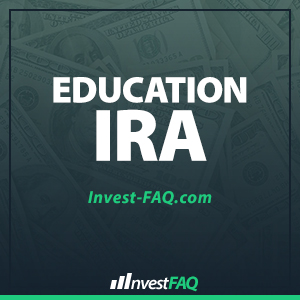 An Education IRA, now known as a Coverdell Education Savings Account (ESA), is an investment account that allows the beneficiary to save for educational expenses, tuition, and college costs while receiving tax benefits.
An Education IRA, now known as a Coverdell Education Savings Account (ESA), is an investment account that allows the beneficiary to save for educational expenses, tuition, and college costs while receiving tax benefits.
This article describes the provisions of the US tax code for educational IRAs as of mid 2001, including the changes made by the Economic Recovery and Tax Relief Reconciliation Act of 2001.
The Taxpayer Relief Act of 1997 introduced a vehicle to assist with saving for educational expenses. Somewhat oddly, it’s called the “Education IRA.” The name is slightly odd because this is not an individual retirement arrangement (IRA), but rather a way to save money for a minor. But hey, that’s the US Congress.
An education IRA may be established for any person who is under 18 years of age. Contributions to this account are limited to $500 per calendar year in 2001 (but rise in 2002). Once the beneficiary reaches 18, then no further funds may be contributed. Although anyone may contribute to a minor’s education IRA, contributions are not tax deductible, and further, contributions may only be made by taxpayers who fall under the limits for adjusted gross income. As with many provisions in the tax code, the limits are phased; the ranges are 95-110K for single filers and 150-160K for joint filers. Also, contributions are not permitted if contributions are made to a state tuition program on behalf of the beneficiary.
The major benefit of this savings vehicle is that the funds grow free of all taxes. Distributions that are taken for the purpose of paying qualified educational expenses are not subject to tax, thus saving the beneficiary of paying tax on the fund’s growth. Distributions that are used for anything other than qualified educational expenses are treated as taxable income and further are subject to a 10% penalty, unless a permitted exception applies.
If the beneficiary reaches age 30 and there are still funds in his or her educational IRA account, they must either be distributed (incurring tax and penalties) or rolled over to benefit another family member.
On a related note, changes made in 1997 to the tax code also permit withdrawals of funds from both traditional IRAs and Roth IRAs for paying qualified educational expenses. Basically, the change established an exception so you can avoid the 10% penalty on distributions taken before age 59 1/2 if they are for educational expenses.
The rules for Edu IRAs changed in mid 2001 in the following ways:
- The contribution limit rises from $500 to $2,000 in 2002.
- Starting in 2002, funds can be used to pay for elementary and secondary education, not just college/university, including private schools.
- Income limits on those who can fund an education IRA rise: married filers will be limited starting at $190,000 starting in 2002.
